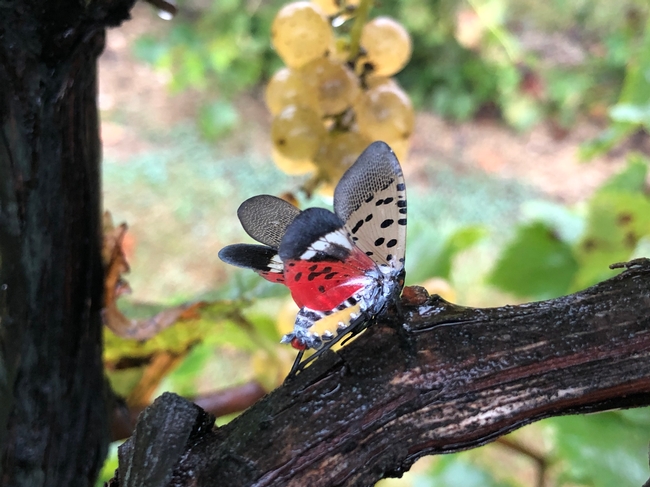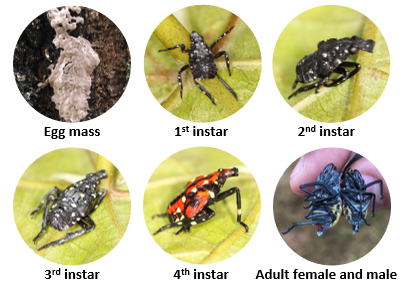The spotted lanternfly (Lycorma delicatula) is an invasive pest in the United States that was first detected in 2014 in Pennsylvania. It is a pest of numerous cultivated and wild hosts. It can cause serious damage to apples, grapes, stone fruit, landscape trees, and others and can be a nuisance pest in urban areas.
Is California at risk?
It is predicted that many agriculturally important regions in California are at a high risk if this pest ever invades the state. California climate and a wide host range including both cultivated and wild species can support the establishment and spread of the spotted lanternfly. The tree-of-heaven, which is a favorite host of the spotted lanternfly, is an invasive tree that is spread throughout California and can serve as a source of infestation.
Who should be concerned?
Apples, cherries, grapes, peaches, pears, and roses are some of the commodities at risk in California that are valued at more than $7 billion. Spotted lanternfly is also a nuisance to the urban landscapes by infesting grapes, roses, and various species of trees.
What does this pest do?
Spotted lanternfly inserts its piercing and sucking mouthparts into plant tissues, feeds on nutrient-rich phloem sap, and produces large volumes of honeydew. Feeding depletes nutrients, reduces plant vigor, and yields. Sooty mold develops on honeydew and affects photosynthesis. Heavy infestations can kill the plant. When uncontrolled, populations build to hundreds or thousands on an individual plant.
What is its life cycle?
On the east coast, egg laying occurs in fall, nymphs start emerging in spring and mature to adults starting in summer. Eggs are covered by waxy protective material.
How to control spotted lanternfly?
Removing and destroying egg masses, applying biological and synthetic pesticides, and encouraging biocontrol agents are some of the control options. The first line of defense is to prevent its invasion and spread.
How can it get to California?
It can arrive as egg masses (mistaken for a splash of mud) or other life stages in/on packages, vehicles, and other inanimate objects moving from infested areas.
What should we do?
Since spotted lanternfly affects cultivated, landscape, and wild plants, both the farming community and the general public should be aware of it, its potential damage, and negative impact in California. All of us should be able to recognize the pest and report to the local agricultural commissioner or farm advisor offices.
This is a dynamic space various resources will be periodically added about this pest.
A quick overview of the spotted lanternfly biology, its damage to grapes, and potential control options (5 min)
A detailed overview of the spotted lanternfly, its damage, and control options (33 min)
Extension article in Pest News eJournal
Scientific article in the Journal of Integrated Pest Management
Compilation of research articles in Environmental Entomology
Current distribution in the United States
Establishment risk in the United States and globally published in the Journal of Economic Entomology
Website managed by the Northeastern IPM Center's resource to Stop SLF
Management guide from PennState Extension


